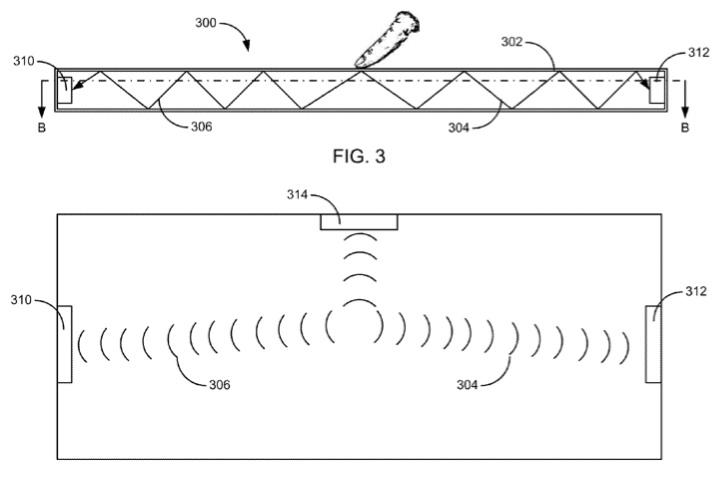Apple investigating flat 'key-less' keyboard using acoustic cues
The patent, entitled "Piezo-based acoustic and capacitive detection," was published by the U.S. Patent & Trademark Office last week. Apple's invention attempts to solve an issue with touch-sensitive input devices.
"In general, touch-sensitive surface or related input devices may be less reliable in determining a pressed command or intended input when compared with a traditional mechanical keyboard," the filing read. "For example, some touch screens often require that a user tap on the screen several times before detecting the command.
The Mac maker's proposed solution is to couple a capacitive touch sensor with a piezoelectric sensor that can detect an "acoustic signature" from user input. That acoustic signature would then be compared to a database of reference acoustic signatures in order to determine where the input occurred.
One embodiment of the invention would entail multiple piezoelectric sensors to track more than one acoustic pulse. Apple also proposes that "tuning features," such as openings on the surface of the keyboard, could help distinguish various keys by distorting or altering the acoustic signature of taps.
According to the filing, pressure switches and proximity devices could also be utilized to help ensure accurate detection.
Apple suggests that "it may be useful to provide an input device that is flat and has few to no moving pieces, as this may yield a more robust product." The company also noted that the invention could "take any form of a input-surface input device for a computing system, not just a traditional keyboard layout.
The filing provides for several materials for the keys, such as metal, glass and plastic. In the case of metal or plastic, the keys could be "machined, stamped or micro-perforated" into the surface. For a glass solution, keys can be painted on the surface or "provided as graphics on a display screen located below the glass surface."
Additionally, keys could be indented or have textural differences that would help users distinguish between keys. Apple suggests that the flat keyboard could include a "haptic or tactile feedback mechanism" that would provide "force, vibration and/or motion" to a user's fingers or hands in response to pressing on the keyboard surface. The company has, in the past, expressed interest in haptic feedback for touch screens.
Apple filed for the patent on Jan. 20, 2010. Mushtaq A. Sarwar, Omar Sze Leung, Aleksandar Pance, Brett Bilbrey and Andew Ross Richardson are credited as the inventors.
 Josh Ong
Josh Ong











 Andrew Orr
Andrew Orr
 Malcolm Owen
Malcolm Owen

 William Gallagher
William Gallagher

 Mike Wuerthele
Mike Wuerthele
 Christine McKee
Christine McKee








